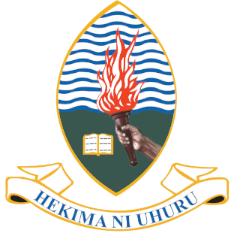
Mobile Networks Architecture Evolution and Drivers for Migration from 1G to 5G
Description
The Telecommunication industry has witnessed tremendous growth in both technical innovations and services to the extent that much of the early 80s and 90s solutions, such as 1G and proprietary wireless solutions (e.g. Digital Access Rural Network) have come and gone. However, remnants of the old co-existing with the latest solutions still exist, thus causing many complexities in the operations and evolution of the platforms, products, and services. In Tanzania operating environments, this scenario will stay with us for a long time due to user profiles, use cases, and economics determining the pace and locations to roll out the latest networks and network capabilities.
Mobile networks are the backbone of telecoms service provision in Tanzania. Over 98% of users get telecoms services through mobile networks. Therefore, in modern telecoms service provision (business, operations, management, legal and regulatory frameworks, and policy-making), all key stakeholders in the industry should be familiar with the mobile industry as it evolves through the various releases and revisions of mobile networks over the years. Also, stakeholders need to understand and analyze implications in the growth and sustainability of the mobile industry in Tanzania. This knowledge will help to harmonized and streamline efforts to deliver telecommunications services, especially broadband and internet services in the country that currently has only about 25% internet penetration.
This course presents different network capabilities and the key drivers for network migrations from 1G to 5G. We shall focus on use cases and network KPIs (e.g. range, capacity, throughput, and QoS) considerations for the different use cases. This coverage will promote innovations in services and network deployments in the local Tanzania telco market.
Objectives
The goal of this course is to equip professionals with an understanding on mobile networks migrations and their peculiarities in the Tanzanian operating environments. The course empowers participants to address business, operational, and managerial problems, hence improving telecommunications service provision in Tanzania.
Learning outcomes
|
Today’s mobile networks are a result of continuous Research and Development by academia, vendors, global interest groups, and standards bodies, such as the ITU and IEEE. For example, we see that the latest smartphones can operate in a heterogeneous network environment and simultaneously operate on numerous wireless network architectures. Our interest is to understand generations of mobile networks (1G, 2G, 3G, 4G, and 5G) and their implications in the Tanzania operating environments. |
|
|
1. |
Understand the Tanzania operating environments from users and usage patterns, technologies, and legal and regulatory frameworks. |
|
2. |
Understand the Mobile Networks Building Blocks of MNO. |
|
3. |
Understand basic network architecture functions, including network elements, interfaces, signaling and control planes, and protocol stacks, among others, of different generations of Mobile Networks. |
|
4. |
Step through network architectures from the early days of 1G and mobile networks of today. |
|
5. |
Align network function to the elements required in the architecture. |
|
6. |
Identify the necessary requirements to evolve the mobile network architecture in support of emerging network functionality and use cases. |
|
7. |
Understand the keys to optimal end-to-end network performance. |
|
8. |
Broaden knowledge of mobile wireless access networks in heterogeneous operating environments. |
|
9. |
Relate overall mobile wireless network architecture functions and evolutions to the various systems deployed today; 1G, 2G, 3G, 4G, and beyond. |
|
10. |
Understand the approach of standards bodies, including IEEE, 3GPP, and 3GPP2. |
|
11. |
Understand the impact of local policies, legal and regulatory frameworks in Telecoms service provision. |
|
12. |
Understand the role of various stakeholders in Tanzania Telecoms Service provision. |
Topics
|
1. |
Status of Tanzania Telecoms Market and its challenges |
|
2. |
Mobile Networks generic architecture and wireless connectivity |
|
3. |
Mobile Network Generations (3GPP – 1G, 2G, 3G, 4G, and 5G) |
|
4. |
Services and Use cases |
|
5. |
The Tanzania mobile networks operating environments and implications in deployments of different mobile network generations |
|
6. |
Legal and regulatory framework considerations and implications |
Target Group
Telco employees at different levels, suppliers of equipment and handsets, suppliers of different telecoms solutions and hardware, including Value Added Services, staff from regulators (TCRA, TCAA, TIC, and NEMC, among others), and policymakers (e.g. ministry staff). This course is suitable for mid-level and senior staff who are responsible to make decisions on deployments, business planning, changes in regulations and licensing requirements, and policies. Private sector engineers and managers who want to make decisions on the choice of telecoms service providers or partners or suppliers for telecoms products and services may also benefit from this course.
Course Materials
Each registered participant will receive a copy of instructors’ slides and other materials, such as references, papers, and policy documents used during the course.
Certificate of Attendance
Participants will be awarded certificates of attendance by the University of Dar es Salaam.
Fee
(1) TZS 400,000 (Tanzanians)
(2) USD 200 (Foreigners)
Payment
All payments should be made centrally through Control Numbers provided by the University of Dar es Salaam. After registration, a Control Number and invoice will be emailed to you using information you have provided in the registration system.
